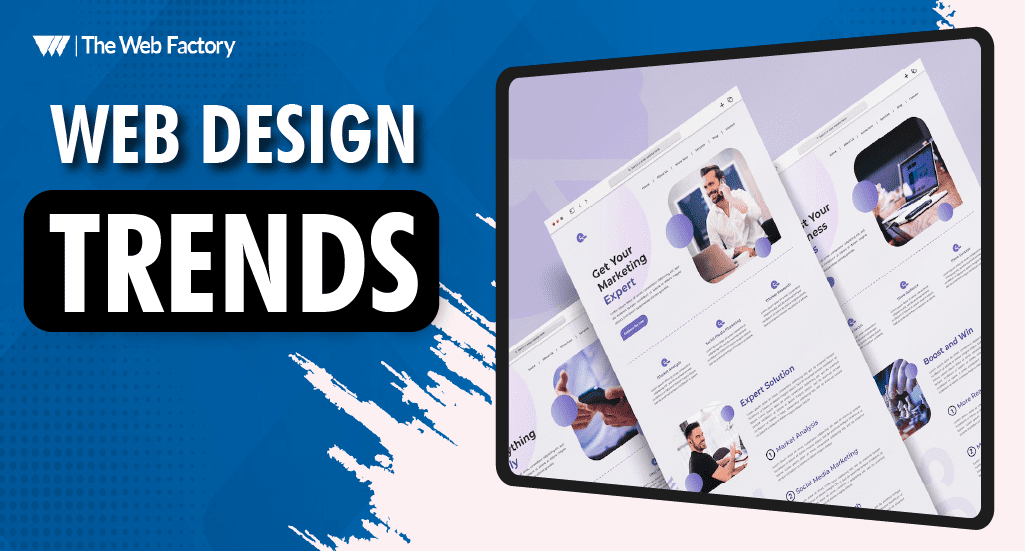If you’ve decided to remodel your site according to current website design trends, you know you’re in for a lengthy process. A redesign significantly impacts your brand identification, customer relationships, and business’s financial health.
Effective and new web design trends are based on sophisticated but not necessarily difficult principles. They evolve logically and are founded on fundamental ideas about testing, human behavior, and aesthetics.
Proven Web Design Trends in 2022 to Boost Web Traffic & Sales
In this article, we will examine some tried-and-true methods for designing websites that users will return to to use, register with, and make purchases from.
1. Psychology Has A Bigger Impact Than You Realize
Effective and creative website designs are essentially based on behavioral psychology, especially regarding customers.
People react to colors, shapes, typefaces, pictures, and every other visual component on a page in particular and detailed ways.
The best designs help consumers move through a spectrum of emotions while always keeping in mind that the main objective is to influence the user’s behavior rather than visual attractiveness for its own sake.
2. Recognize Your Target Market
Web design services initiatives fail when designers don’t design with their audience in mind but instead design for themselves.
Keep in mind that your customer comes first before creating any strategy. Everything you produce ought to make their experience on your website more convenient.
Ensure that web flows and navigation are simple and logical, especially when designing websites for blogs. Pay close attention to and take time designing any pages or content that stand out as your greatest performers.
It’s preferable to make little improvements to high-converting pages rather than executing a complete redesign. Absolute perfection may not be possible to achieve.
Making “personas” is one of the finest ways to ensure that your audience is a top priority. Knowing how visitors interact with your website will help you identify areas for enhancement, removal, or both, as needed.
3. Base The Redesign On User Objectives
Although consumers could find the complex layouts and emotive visuals appealing, their main objectives when visiting websites are usually different.
Whether they are looking for information, to subscribe or register for an account, to make a purchase, or anything else, they have come to your site because you have something they want.
Effective web designers construct sites that explicitly structure the story around providing the value that consumers seek because they are aware of this concept.
4. Make Wise Color Choices
There’s a reason why so many businesses use particular hues for their websites and logos. This is so because people rarely consider how a particular shade makes them feel, even though colors trigger a subconscious emotional response.
Because they elicit favorable reactions from viewers, blue and orange, for instance, are popular colors across saturation levels in web design and branding.
Blue, in particular, is frequently linked to trust, making it a perfect option for financial organizations. On the other hand, orange is a complementary color to blue, making it a perfect accent color because of its positive and energizing associations.
Does this imply that if your brand logo isn’t blue or orange, you should go out and change it? Of course not. However, while you develop your website, there are several fundamental user interface (UI) design principles that you want to bear in mind.
- Avoid using bold colors in areas users, such as huge sections, must read. It could be illegible and difficult to read. White background negative space is and will always be your best buddy.
- Use a limited number of colors to create a unified color scheme and palette that will be used throughout the website.
5. Accessibility and Animation
Micro animations are small and highly significant as they play an important part in guiding and helping visitors interact with a website. They also contribute by adding elements of playfulness to a site, such as that of a superhero.
Though these animations have been popular, 2022 will be about organically using micro animations for websites.
According to UI/production designers, these are one of the newest web design trends for e-commerce platforms as they enhance user experience, giving customers a taste of their products.
Most clothing stores use micro animations to display the fitting of their material on real people.
On every website, animation should be utilized sparingly. Too many animations can be annoying since they obscure your intended message to the visitor.
According to Sydney Animation Companies, animated file formats that shuffle images with sharp transitions can be used to create some simple animations. They can be seen in plain banner adverts as well.
Although the animation is poor, these are more compatible with mobile devices such as phones and tablets like the iPad.
jQuery may produce more complex animations. It is likewise standard compatible and usable on mobile devices. HTML 5 is the most recent animation technology, but it is only compatible with the most recent browsers.
One of the little-known web design secrets is that Flash should never be used on a website because it is incompatible with mobile devices or the best SEO practices.
6. Minimalistic Design
You might believe that you require a website with bells, whistles, and everything in between when you become lost in the web design trends rabbit hole.
That may certainly be remarkable. But most of the time, your target audience doesn’t require or want such design components.
Consider some of the most popular websites that receive a lot of traffic; they all share one trait: simplicity. Nobody feels overwhelmed while using Google, Facebook, or Craigslist. This is because of the simplicity of these websites and their UX-friendly designs.
While all of the websites mentioned above are very interactive and have intricate backend systems, what is shown to the end user is a clear website that even a first-time user can understand.
You can benefit greatly from Facebook’s approach to design:
- A neutral color scheme that emphasizes negative space and provides a cleaner appearance.
- Fonts are legible and standardized across browsers. Choosing an appropriate size that is not too small for the eyes is part of this.
- Fewer design components are used. There are a lot of interactive features, yet no annoying pop-up ads or large, slow-loading images are there.
7. People Prefer Symmetry or Symmetrical Designs
The propensity for symmetry, or anything close to it, is another key to successful web design. Gestalt’s Law of Principles, frequently mentioned when discussing branding, is crucial when developing a website.
Humans tend to favor symmetrical designs over asymmetrical designs; therefore, you should pay close attention to the Law of Symmetry in particular.
But remember that “perfect symmetry” can be difficult given that one of the most common web design layouts consists of a single large column with a sidebar.
This kind of symmetry is called approximation. Even if it’s not exactly, it produces a flow that the eyes can easily follow.
8. Establish Your Reputation and Credibility
Similarly, customers are more inclined to order a service or purchase a product when they read reviews from actual customers.
Reviews or client testimonials are helpful in this situation. They offer prospects to those who want to move forward with confidence and peace of mind.
Although not all company models will benefit from this strategy, service providers and companies that sell products must almost always use it.
One simple option for integrating consumer input is showing reviews from aggregator websites like Trustpilot or Google. This is an added benefit in terms of the SEO process.
The greatest businesses following this strategy have attentive customer service that can respond to positive and negative feedback.
9. Make Use of Project Hosting Services To Track Updates
It is useful to have quick access to earlier iterations of your website when running various tests so that you can quickly revert if necessary.
You can manage your website’s updates, revisions, and enhancements using project hosting platforms. You can also take corrective action if your new design doesn’t work out as expected.
Every modification to the site can be carefully tracked and tested, and older versions can always be accessed without taking up a lot of internal server space.
Conclusion
You may achieve your goals with even the smallest steps. These web design trends ‘secrets’ are just sound suggestions that the best custom web designers naturally consider.
They are the stepping stones to success, and once you reach the top, you can choose your own rules. But let’s stick to the tried-and-true strategies that we are confident in for now.











